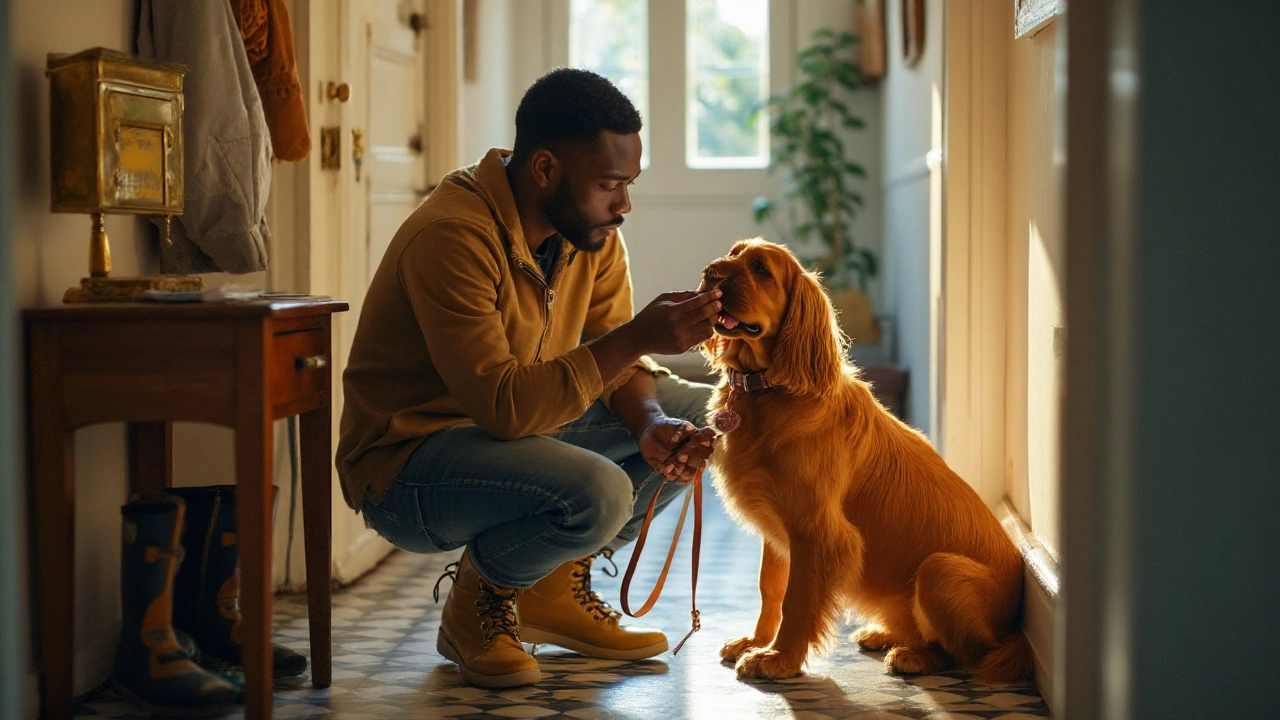Should I Take My Dog's Collar Off? Simple Answers & Practical Tips
Many owners wonder if their dog’s collar is doing more harm than good. The short answer? It depends on the situation. Below we break down the key reasons you might want to remove a collar and how to do it safely.
When It’s Okay to Leave the Collar On
For most healthy dogs, a well‑fitted collar is fine all day. It holds ID tags, allows a leash, and helps you spot your dog if they wander. Make sure the collar is snug enough that you can slip two fingers underneath, but not so tight it leaves a red mark. If your dog is active, playing fetch or running off‑lead, a sturdy collar is usually the safest choice.
Reasons to Take the Collar Off
1. Skin Irritation or Infection – If you notice redness, hair loss, or a weird smell, the collar might be rubbing too hard. Removing it for a few hours lets the skin breathe and heal.
2. Post‑Surgery or Medical Issues – After an operation, stitches, or a wound near the neck, a collar can put pressure on the site. Your vet will likely ask you to keep it off until the area is closed.
3. Training with a Harness – When you transition to a harness for walking or pulling, the collar can get tangled. Many trainers suggest taking the collar off during harness use to avoid choking.
4. Sleeping or Rest Time – Some dogs chew or bite their collars at night. A short break while they’re in a crate or bed can prevent damage and protect the throat.
5. Summer Heat – In hot weather, a collar can trap heat around the neck. If your dog seems overly warm, slide it off and offer water and shade.
When you decide to remove the collar, keep a few things in mind. First, always have a backup ID method—microchips, a safe‑tag on the harness, or a temporary tag on a bandana. Second, store the collar in a clean spot to avoid bringing dirt back onto your dog later.
If you’re unsure, ask your vet. Most professionals will check the fit during routine exams and let you know if a switch to a harness or a collar‑free period is needed.
Bottom line: don’t panic if you need to take the collar off for a bit. It’s usually safe as long as you have alternate identification and keep an eye on your dog’s comfort. When the reason passes—like a healed wound or cooler weather—slide the collar back on and check the fit again.
Got more questions? Feel free to reach out to Oakwell Gundogs for personalized advice on collars, harnesses, and overall dog health.
- Morgan Ainsworth
- 0 Comments
Should You Take Your Dog’s Collar Off at Home? UK Indoor Collar Safety Guide
Wondering if your dog should wear a collar indoors? Get a clear UK-based answer, step-by-step decision tips, safety checklists, and when to keep it on or take it off.
View More
